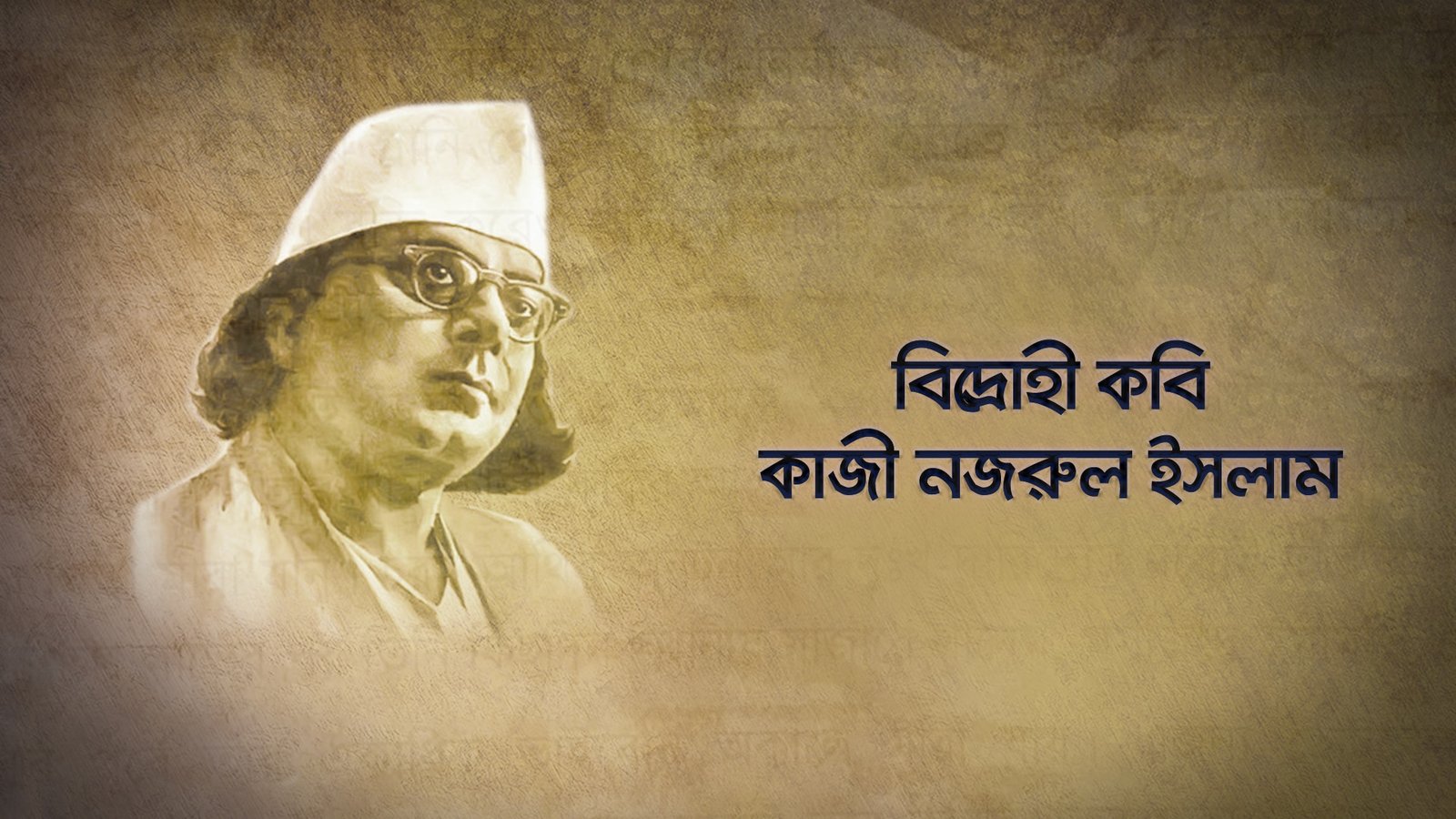Nazrul started encouraging people to raise their voice against the British Raj. He also organised a socialist political party called ‘Sramik Praja Swaraj Dal,’ along with another revolutionary named Muzaffar Ahmed. After his wedding with Pramila Devi on April 25, 1924, Nazrul’s image as a rebel poet attained further popularity as he married a Hindu woman, who belonged to the ‘Brahmo Samaj.’ In December 1925, he started publishing a weekly called ‘Langal’ and even worked as the publication’s chief editor. In 1926, he settled down in Krishnanagar along with his family, after which he began experimenting with his poetry and musical skills. By transforming Urdu and Persian poetry, Nazrul composed the first set of Bengali ghazals. He also introduced Islam to Bengali music, which was dominated by Bengali Hindus until then. His religious songs, which were based on both Hinduism and Islam, became extremely popular among the masses, which led to his association with the famous record label ‘His Master’s Voice’ (HMV) in 1928. His compositions were broadcast on national radio stations, making him popular all over the country. In 1930, he once again faced charges of sedition for publishing his book ‘Pralayshikha,’ which was banned by the government. Three years later, he came up with ‘Modern World Literature,’ a collection of essays. Due to certain real-life events, Nazrul’s works during the later stages of his career were influenced heavily by his religious beliefs. Though a born Muslim, Nazrul was an exponent of Hindu belief system, which he incorporated into his works of art. Nazrul’s success as a poet and music composer introduced him to the film industry in the mid-1930s. He became the first Muslim director to helm a Bengali film, when he made his directorial debut through the film Dhruva Bhakta. He was then roped in as the music director for a film, which was based on Tagore’s popular novel Gora. He also worked in various plays and then started working for the Calcutta Radio in 1939. In the same year, his wife Pramila became seriously ill, which prompted him to return to journalism to take care of his wife’s medical expenses. In the early 1940s, Nazrul too became ill and went into depression as his illness couldn’t be cured. In 1942, his condition worsened, and he was admitted into a mental asylum. Over the next 10 years, Nazrul was given various treatment, but to no avail.In the early 1950s, a group of volunteers sent Nazrul and Pramila to places like London and Vienna for treatment. In Vienna, he was examined by an Austrian psychiatrist and neurologist named Dr. Hans Hoff, who confirmed that he was suffering from an incurable condition called Pick’s disease. He came back to Calcutta on December 15, 1953, where he remained in an intensive medical unit for a long time. On May 24, 1972, Bangladesh sought India’s permission to bring him to Dhaka, where he was granted the citizenship of Bangladesh in January 1976. On August 29, 1976, Nazrul succumbed to his ailments and his mortal remains were buried in the ‘University of Dhaka,’ in accordance to his wish. A number of educational institutions and other centres of learning have been established in his memory. ‘The Nazrul Endowment’ was established to preserve his ideas as well as his large collection of works. Also, many institutions and avenues in India and Bangladesh have been named after him. A number of streets in Kolkata and Dhaka are named after him. In 1972, Bangladesh declared Nazrul as its national poet. In 1976, the government of Bangladesh honoured him with ‘Ekushey Padak,’ the country’s second highest civilian award. He was also honoured by the government of India with the country's third highest civilian award, ‘Padma Bhushan.

